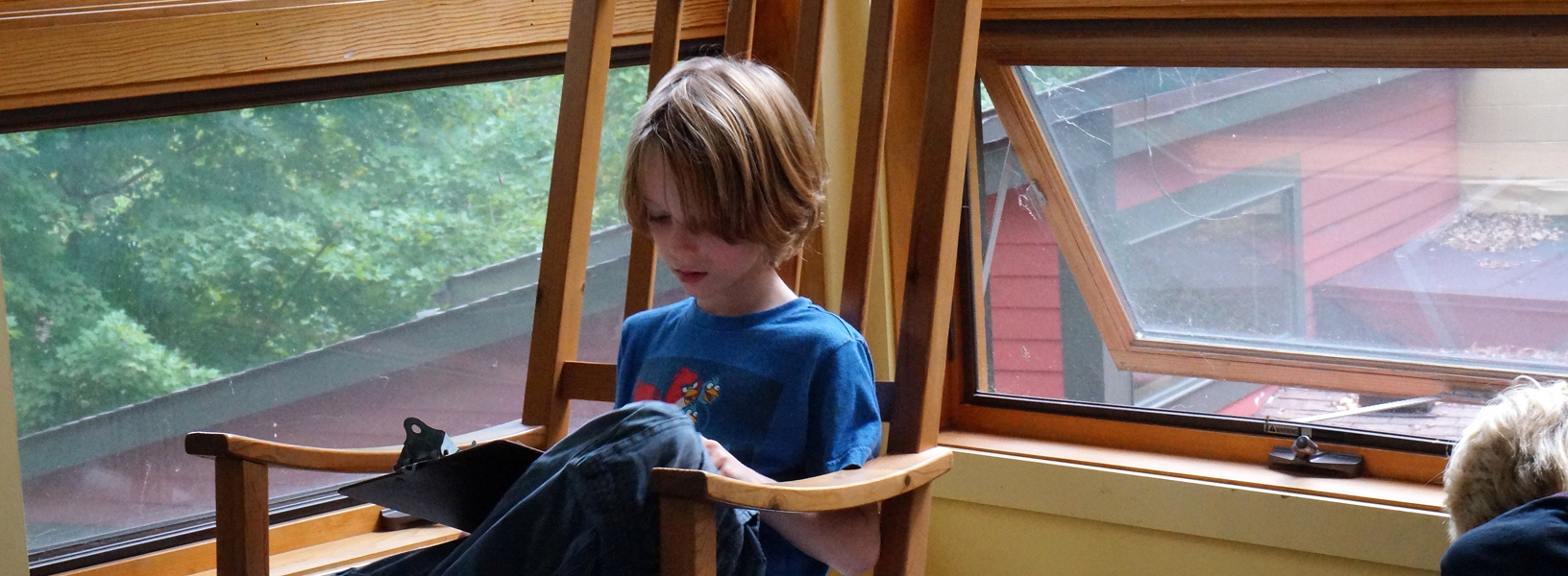Fostering Creativity
Last year we unveiled our Vision for 2023, including the goal for Miquon to become a progressive school leader — known for fostering learning through inquiry, discovery, and play. What is truly exciting to me is that as we mindfully develop space and time in which children can play, we are also implementing structures that foster children’s creativity.
Gerard Puccio, the director of the International Center for Studies in Creativity at Buffalo State, says that not only can creativity be measured, it can be taught. He says that there are three components to creativity: knowledge (in the tinkering arena, this might be knowledge of how to operate a saw and drill), imagination (Puccio says children have no trouble with this part), and evaluation (did the trebuchet I built launch the ball as far as I wanted?).
Another way of putting it is that divergent thinking (generating many ideas or solutions) and convergent thinking (coming to a conclusion about those ideas) are both required for critical thinking and creative problem solving.
We know from Tony Wagner, head of the Innovation Lab at Harvard, that critical thinking and imagination are two of the seven survival skills that students need to master in order to thrive in the new world of work. He says that these skills are the same ones that will enable students to become productive citizens who we hope will solve some of the most pressing issues we face in the 21st century. (Check out his Ted talk on this.)
Yet there is one aspect of creative thinking that I didn’t list, and it is the one that has lingered with me in one way or another for the last few months.
It is called “resistance to premature closure.”
I know, at least in our staff meetings, nothing can kill a generative mood more than someone saying, “We tried that before, it doesn’t work.”
If you want to foster creativity — as a parent of young children I said “hurry up” 10-20 times a day — we must learn to let the ideas flow. The creative thinking skill of fluency is the ability to generate lots and lots of ideas. Children are masters of this. We need to learn from them. Children already have most of what it takes to be creative for the rest of their whole lives.
At school, our job is to give Miquon kids the knowledge and the ability to think critically so that they can ground their imaginations and be successful. But we know we must be gentle and take good care of all their wonderful ideas and endless questions. That open-minded patience is a quality shared by all our teachers here at Miquon. They work hard against our schedule to design the day so as not to hurry children, building structures to allow dialogue in which all voices are heard and there are multiple ways for children to express their identities and new ideas.
And for those of us who might be trying to reignite our creativity, again these are skills that can be practiced. Those who have read Dr. Carol Dweck’s Mindset (as our staff did this summer) will recognize when I say that creativity is not a fixed and limited ability you either have or don’t. You can both teach creativity and practice it.
We are excited to be creative together this year. This past summer, a friend observed that it is easier to be kind when you are not in a hurry. It is a mantra I have tried to live by as we really dig into the school year and our schedules and weekends start to fill. At the same time, I have realized it is also easier to be creative when you are not in a hurry. So, let’s all make a commitment that we will try to slow down a bit during our time at Miquon this year so that we might better entertain the novelty and creativity that will develop.
Each year, our teachers are eager to share many things with your children — providing your children with a rich Miquon environment to feed their minds, hearts and bodies and to teach them important skills. And this year, we will take special care not to hurry it along.

One Response to Fostering Creativity